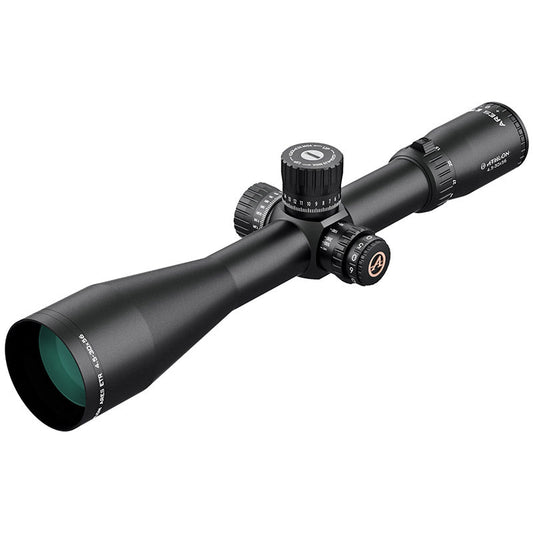

Athlon Ares ETR UHD Rifle Scope 4.5-30x56 delivers precision and clarity for both competitive shooting and hunting. With Extra-Low Dispersion (ED) lenses, it provides vibrant and true-to-life images, making it easier to spot targets in various lighting conditions. The robust 34mm tube construction ensures durability, while the locking windage turret allows for precise adjustments, enhancing your shooting experience. Built for versatility, this scope performs well in both short and long-range scenarios, making it a reliable choice for all shooters.
Equipped with a precision zero stop system, this scope allows for quick and accurate returns to your zero setting, boosting confidence in your shooting. Its user-friendly design caters to novices and experienced marksmen alike, ensuring every shot counts. Whether you're out hunting at dawn or competing in a shooting match, the Ares ETR UHD Rifle Scope meets the demands of serious shooters.
Key Features:
- PRECISION ZERO STOP for a repeatable return to zero, ensuring consistent accuracy.
- SUPERIOR CLARITY with ED lenses that provide enhanced color fidelity and detail.
- ROBUST DESIGN ensures durability against harsh weather conditions.
- MULTICOATED OPTICS maximize light transmission for brighter, clearer images.
- USER-FRIENDLY features a locking windage turret for straightforward adjustments.
- VERSATILITY with parallax adjustment from 25 yards to infinity for adaptable shooting.
- HIGH-PERFORMANCE delivers reliable and consistent adjustments shot after shot.
- BUILT FOR HUNTERS to excel in both short and long-range shooting scenarios.
Technical Specifications Table
| Feature | Specification |
|---|---|
| Magnification | 4.5-30 |
| Objective Lens Diameter | 56 mm |
| Weight | 36.5 oz |
| Length | 15.3 inches |
| Tube Diameter | 34 mm |
| Reticle | APRS1 FFP IR MIL |
| Field of View @ 100 yards | 24.5-3.75 ft |
| Parallax Adjustment | Side Focus – 25 yards to infinity |
What’s in the Box?
- Lens covers
- Padded case
- Neck strap
Customer Reviews
“The clarity is unmatched. I had no trouble spotting my target even at long distances!”
“The zero stop feature is a game changer for my hunting trips. Highly recommend!”
“Durability and performance combine perfectly with this scope. Great value for money!”
FAQ
How does the zero stop feature work? It allows you to return to your initial settings quickly, ensuring accuracy shot after shot.
What maintenance is required? Regularly clean the lenses and check for any physical damage to keep your scope in optimal condition.
Can it handle recoil from high-caliber rifles? Yes, its robust design is engineered to withstand heavy recoil, ensuring reliability.
Is this scope suitable for novice shooters? Absolutely! Its user-friendly features make it the perfect choice for all experience levels.
How does it compare to other models? The Ares ETR offers superior clarity and durability, establishing it as a top choice among similar scopes.
Similar Models
Looking for more options? Explore our extensive Athlon lineup, including the Athlon Optics Ares BTR 4.5-27x50 for a versatile choice, or the Athlon Optics Midas TAC 6-24x50 for extreme long-range accuracy. Discover the perfect optics tailored to your shooting adventures!
You May Also Like
Here’s some of our most similar products people are buying. Click to discover trending style.













